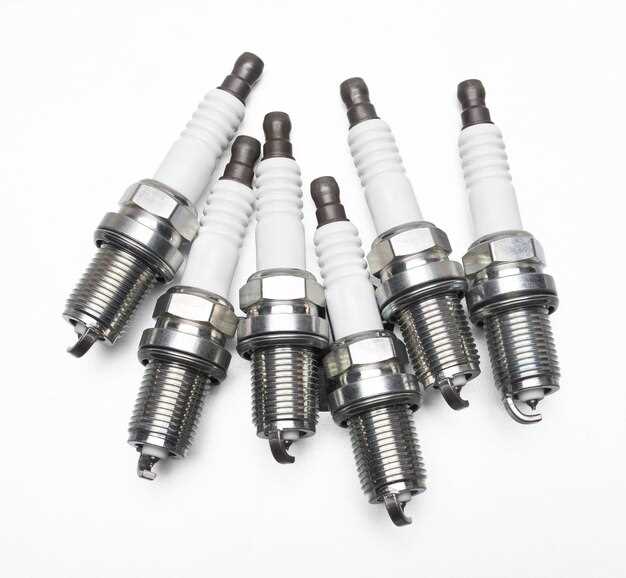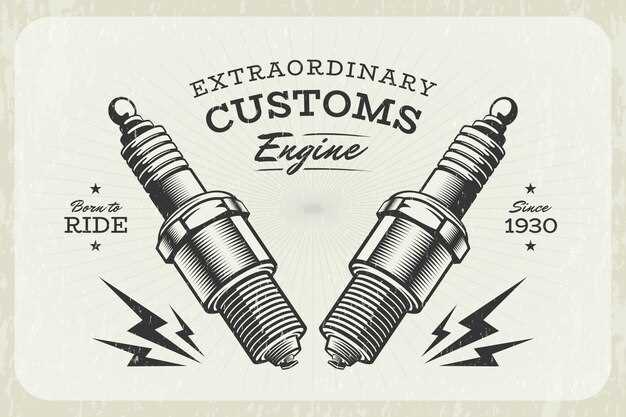
When it comes to maintaining and restoring vintage engines, selecting the right spark plugs is crucial for optimal ignition performance. Vintage engines, often designed decades ago, require specific types of spark plugs that differ significantly from modern alternatives. Understanding these differences can enhance engine reliability and overall performance, allowing classic car enthusiasts to preserve the authenticity of their vehicles.
The role of spark plugs in the ignition system cannot be overstated. They are responsible for igniting the air-fuel mixture within the combustion chamber, ensuring a smooth and efficient operation. For vintage engines, the choice of spark plugs affects not only how well the engine starts but also how it runs and responds under various driving conditions. Thus, choosing the appropriate spark plug is not just a matter of preference but a necessity for maintaining the integrity of the engine.
This practical guide will walk you through the essential factors to consider when selecting spark plugs for vintage engines. From understanding the key specifications to evaluating performance characteristics, this resource aims to equip you with the knowledge needed to make informed decisions. By paying attention to these details, you can keep your vintage engine in excellent condition and enjoy the nostalgic experience it provides.
Selecting the Right Gap for Vintage Spark Plugs

Choosing the correct spark plug gap is crucial for achieving optimal ignition performance in vintage engines. The gap impacts the voltage required for the spark to jump between the electrodes, directly influencing ignition efficiency and engine performance.
For vintage engines, the manufacturer’s specifications are your best guide. Typically, the recommended gap ranges from 0.025 to 0.035 inches, depending on the engine design and operating conditions. Referencing a service manual can provide specific measurements tailored to your engine model.
When adjusting the gap, use a gap tool to ensure accuracy. Too small of a gap may lead to weak sparks, causing misfires and rough idling. Conversely, an excessively wide gap can result in prolonged starting times, poor fuel economy, and increased emissions. Striking the right balance is essential for effective combustion in vintage engines.
It’s also important to consider the ignition system in use. Traditional ignition systems may require a different gap compared to modern electronic ignition systems. An optimal gap calculated for your specific setup will enhance spark consistency and engine responsiveness.
Regular maintenance checks on spark plugs should include gap verification. Over time, gaps can change due to wear and carbon buildup. Monitoring and adjusting the spark plug gap regularly will help maintain the health and performance of your vintage engine.
Understanding Heat Range and Its Impact on Ignition
The heat range of a spark plug plays a crucial role in the ignition process and overall engine performance, especially in vintage engines. Heat range refers to the ability of a spark plug to dissipate heat from the combustion chamber. This characteristic is fundamental to maintaining optimal operating temperatures and ensuring proper ignition.
A spark plug with a lower heat range retains more heat, making it suitable for high-performance applications or engines that operate under demanding conditions. Conversely, a plug with a higher heat range transfers heat away quickly, preventing overheating and potential damage to the engine components, which is vital for vintage engines that may not be built to withstand extreme temperatures.
Improper selection of heat range can lead to several ignition issues. If the spark plug is too cold (higher heat range), it may not reach the necessary temperature for optimal combustion, resulting in fouling and misfires. On the other hand, if a spark plug is too hot (lower heat range), it can cause pre-ignition or detonation, adversely affecting performance and engine longevity.
When choosing spark plugs for vintage engines, it’s essential to consider the engine’s operating conditions, such as load and RPM. Additionally, factors like ignition timing and fuel type can influence the ideal heat range. Ensuring the right heat range is paired with an appropriate spark plug design will enhance ignition reliability and promote better engine efficiency.
Ultimately, understanding the heat range is key to ensuring effective ignition in vintage engines. By selecting the correct spark plug based on heat range, enthusiasts can help maintain the integrity and performance of their classic vehicles.
Comparing Material Options: Copper vs. Platinum for Older Engines

When selecting spark plugs for vintage engines, one of the key decisions involves choosing between copper and platinum materials. Each option offers distinct advantages and disadvantages, particularly in relation to ignition efficiency and longevity.
Copper spark plugs are often favored for their excellent conductivity. This material allows for quick heat dissipation and provides reliable ignition, which can enhance performance in older engines that may not have sophisticated ignition systems. Copper plugs generally have a lower initial cost and are easier to find for vintage models. However, their lifespan is shorter, typically requiring replacement every 10,000 to 20,000 miles. The frequent replacement can be a downside for those seeking convenience in maintenance.
On the other hand, platinum spark plugs are designed for durability and longer service intervals. The platinum electrode resists wear and can withstand higher temperatures, leading to improved ignition consistency over time. This makes platinum plugs a suitable choice for vintage engines that may operate under varied conditions. While they come with a higher price tag, their extended lifespan–often exceeding 60,000 miles–can make them a more economical option in the long run. The ability to maintain effective ignition over longer periods can be especially beneficial for infrequently driven classic cars.
Ultimately, the choice between copper and platinum spark plugs for vintage engines will depend on individual preferences regarding performance, cost, and maintenance frequency. For enthusiasts seeking optimal ignition performance and willing to manage more frequent replacements, copper might be the better choice. Conversely, those prioritizing longevity and lower maintenance may prefer platinum spark plugs to enhance their driving experience without frequent service interruptions.




